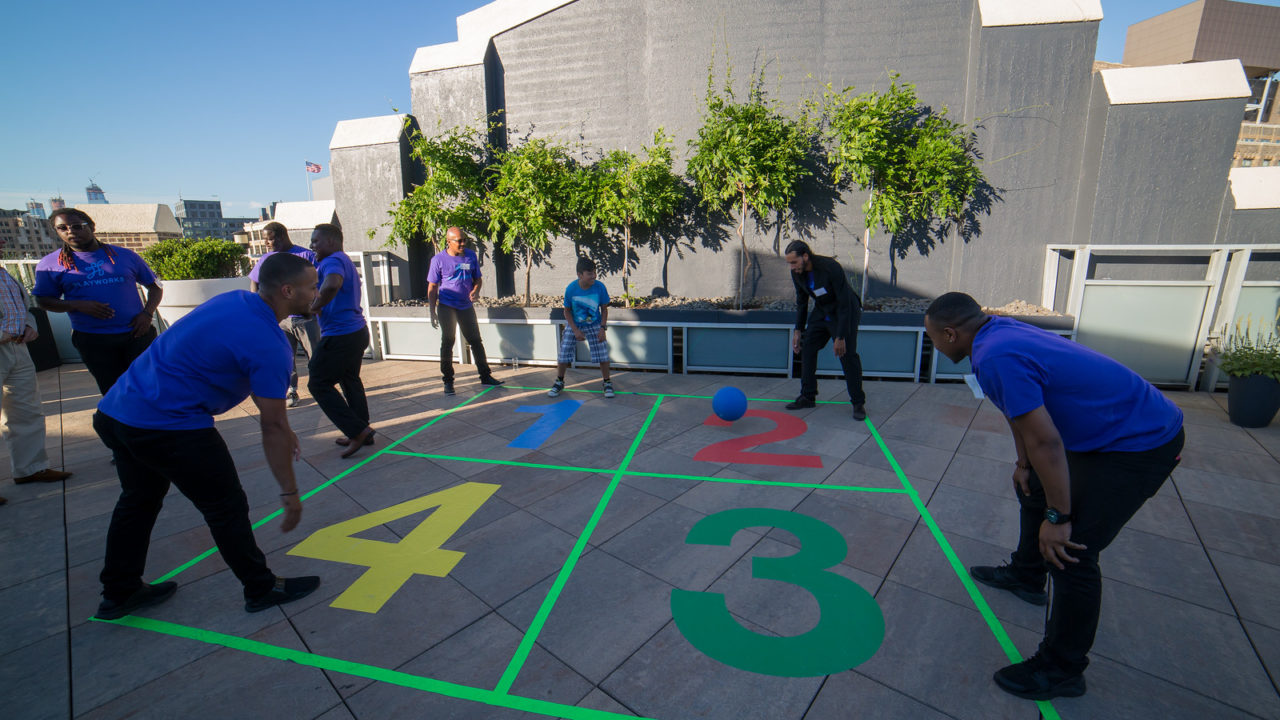Foursquare

Any Size
Grades 1-2
Balls
10 minutes or more
Development Goal
To develop eye-hand coordination and strategic thinking skills.
Before You Start
- One player is in each square and the other players wait in line.
- The player in square D or 4 is the server. That player begins the play of the game.
Set Up
A standard foursquare area is one large square, 10’ x 10’ divided into four smaller squares (5’ x 5’), and each box is labeled A, B, C, D or 1, 2, 3, 4. The box labeled A or 1 contains a smaller service box (1.5’ x 1.5’) located in the far outside corner of the square.
How to Play
- Play begins when the server drops the ball once into her/his square then hits it into a different square (serves the ball). The server must keep both feet in the service box until the serve is completed.
- The ball can only bounce once in any square.
- Each player needs to hit the ball with any part of his/her hand into an opposing player’s square after it has bounced only once in their his/her square.
- If the ball lands on a line, or goes out of bounds before it bounces, the player who hit the ball needs to return to the waiting/cheering line for another try. If a player hits the ball and it bounces again in her/his square, s/he also needs to return to the waiting line.
- If a player catches or holds the ball, that player needs to return to the waiting line.
- If the ball bounces more than one time before it is hit into another square, the player who let the ball bounce needs to return to the waiting line for another try.
- If the ball is returned before it is allowed to bounce, the player who returned the ball early needs to return to the waiting line.
- Anytime a player moves out of the game into the waiting line, a square is left open. The person in front of the line advances to square D or 4, and the remaining players advance to close the gaps between A or 1 and D or 4.
Variations
- Allow less skilled players to catch and release the ball.
- Two players can cover one square, working as a team.
- Use two four square courts next to each other for a game of 8-square.
- To focus more on jump rope and hula hoops skills as well as learn the rotation order on the court, put either one jump rope or one hula hoop in each of the four squares. Have one student step into each square. Have the student in D or 4 say go and see how long each student can jump rope or hula hoop.
- Blank Slate Four Square
- Four Square Switch
- Four Square Categories
- Four Square Volleyball